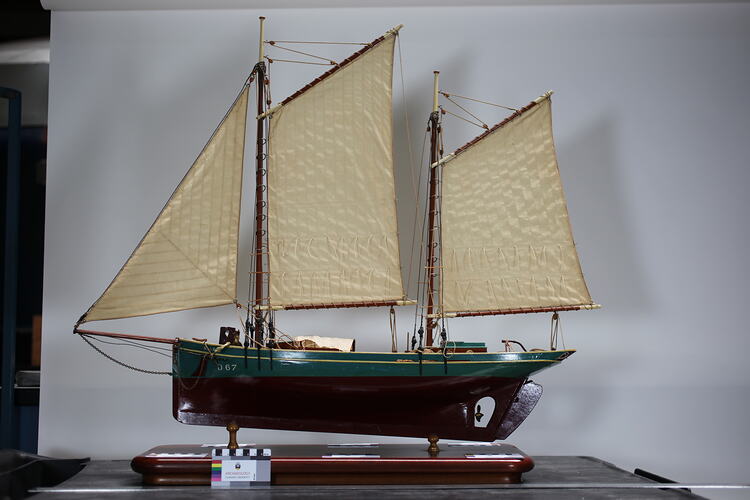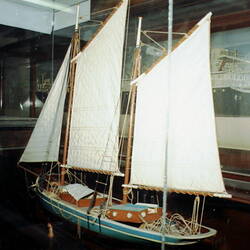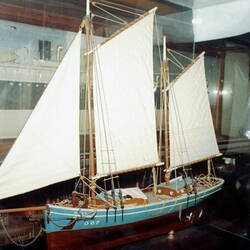Summary
Model pearling lugger 'Mary'. Framing for this model was made by the Japanese shipwright who made the original vessel. The model was then completed by Lieutenant Commander Geoffrey Ingleton RAN in the 1930s from his personal observations of the Mary at Darwin in the early 1930s. By this time the vessel had been fitted with an engine. He was concerned to document accurately this fast disappearing local design and the Museum purchased the model from Ingleton in 1939. The original object label reads:
"The model represents the Mary, which is typical of a large number of pearling luggers. It is a type of vessel which is individual to Australia, and has played a big part in the development of the North. This class of vessel has been evolved over the years to suit the work, in much the same way that fishing boat types all over the world have evolved. These individual type are all disappearing with the encroachment of modern mechanised vessels, and like them, the pearling lugger is doubtless doomed to extinction."
Geoffrey Chapman Ingleton (1908-1998) was a well-known marine artist and model-maker. He served with the Royal Australian Navy between 1922 and 1936 when he was placed on the retired list. In 1937-38 he was commissioned to make models of first fleet vessels HMS Sirius and HMS Supply for the 1938 150th anniversary celebrations in Sydney. These models are now held by the Powerhouse Museum. Ingleton was a highly regarded artist and author specializing in marine subjects. His papers are held in the collection of the National Library of Australia and a collection of his illustrations and etchings are held by the Mitchell Library in Sydney.
More Information
-
Collecting Areas
-
Acquisition Information
Purchase
-
Modelmaker
-
Inscriptions
Labelled 'MARY' and 'D 67' in painted white letters on the left-hand side of the bow above the waterline.
-
Classification
-
Category
-
Discipline
-
Type of item
-
Overall Dimensions
812 mm (Length), 190.5 mm (Width), 114 mm (Depth), 679 mm (Height)
-
Other Dimensions
616 mm (Length)
Hull Dimensions
-
Model Scale
5:96
-
References
-
Keywords





